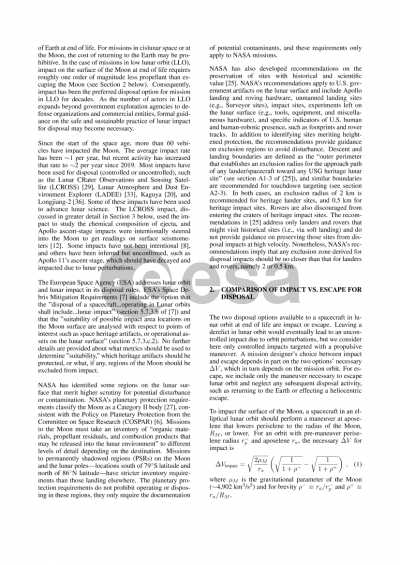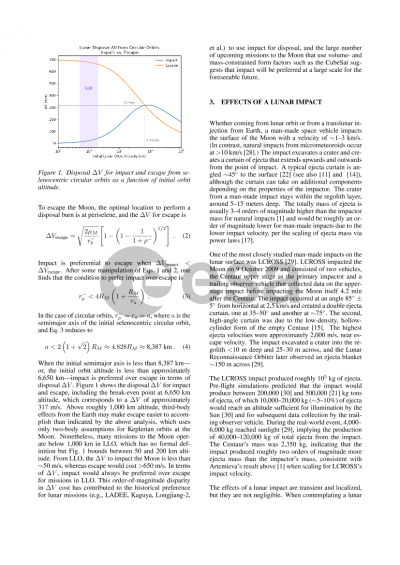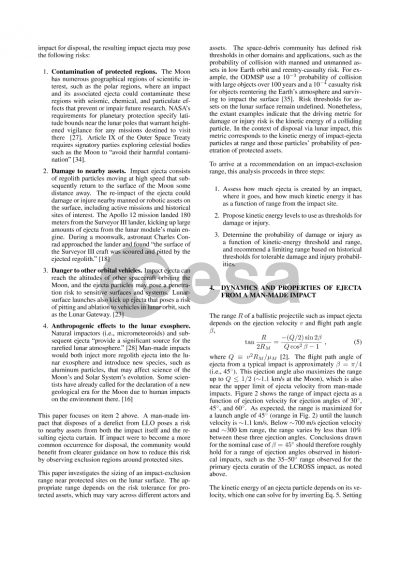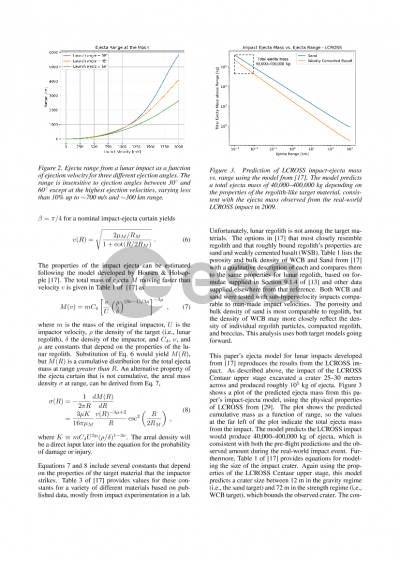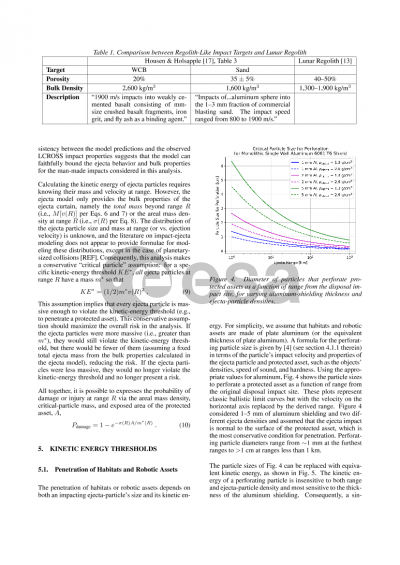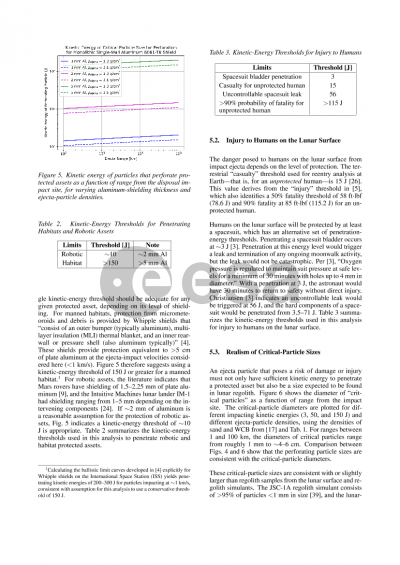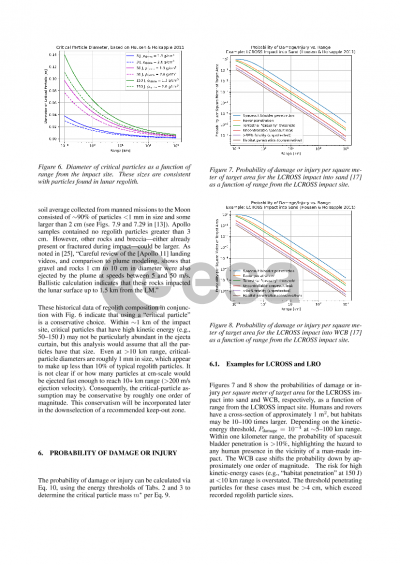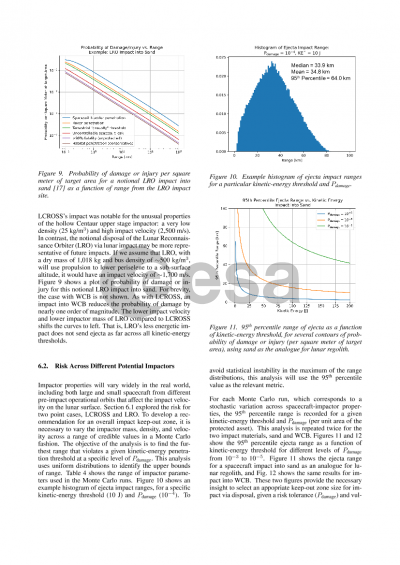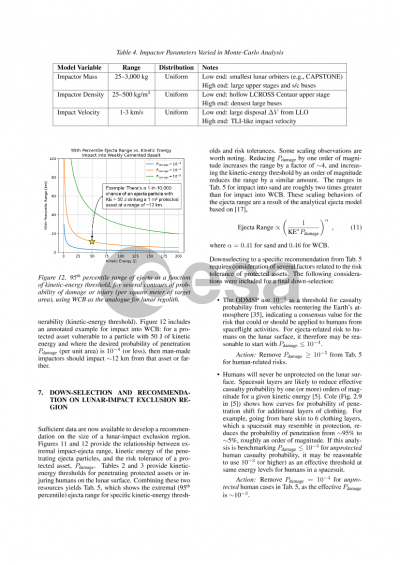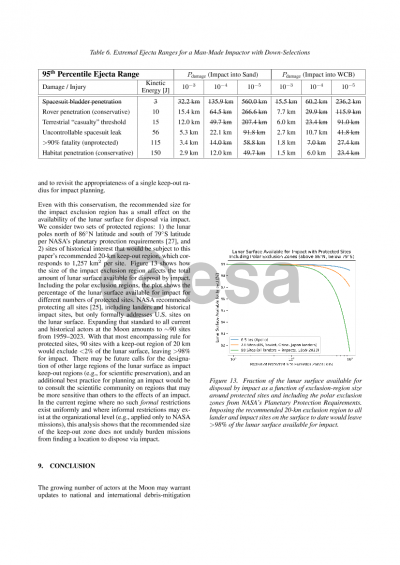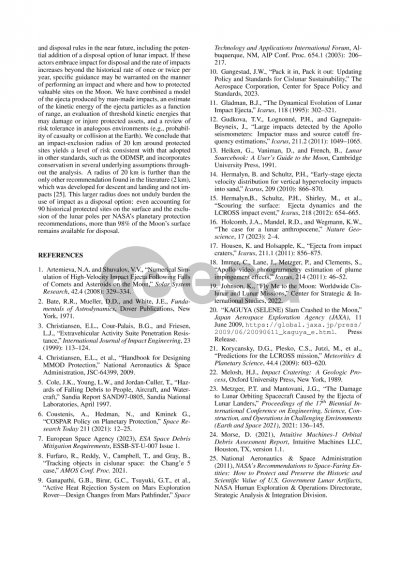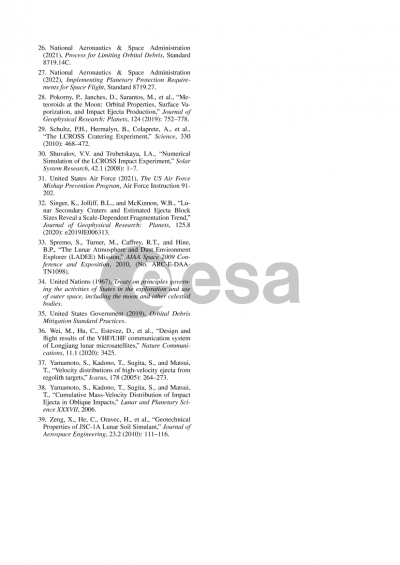Document details

Abstract
This paper reports on an analysis to determine an appropriate exclusion region around protected sites when planning lunar impact as an end-of-life disposal option. Impact with the lunar surface has been a favored disposal option since the beginning of the space age, but until recently only a small number of national scientific agencies operated spacecraft at the Moon. Today, interest in the Moon is reaching a fever pitch, with dozens of missions in development or announced, including government and commercial actors around the world. Many of these operators already have or will use impact as a disposal option, but national and international rules that govern end-of-life disposal provide few specifics on how an impact should be designed to preserve the safety of other actors at the Moon and the lunar environment overall. New actors at the Moon may lack the institutional capability to perform an analysis of the impact area and the associated risk to fellow actors. In the future, new requirements specific to the practice of lunar impact may be necessary, and a key element of any such requirement would be an exclusion region.
When a spacecraft impacts the lunar surface at orbital velocities, it excavates a crater several meters deep and wide and creates a plume of ejecta that rises many kilometers above the surface. The ejecta may travel several kilometers from the original impact site and land with sufficient kinetic energy to cause damage or injury to protected assets. Current formal guidance on lunar impact (e.g., ESA Space Debris Mitigation Requirements) advises the protection of operational assets and sites of historical interest, but the guidance does not specify whether disposal should be limited to certain regions on the Moon, how far from high-value sites an impact should occur, and which sites should be protected.
Following a review of the literature on impact ejecta, lunar regolith, and historical impact examples, we develop expressions that model 1) the mass density of ejecta as a function of range from the spacecraft impact site and 2) the kinetic energy of ejecta particles when they impact the surface at range. We identify from the literature threshold kinetic energies that correspond to damage or injury of protected assets (e.g., 3 J to penetrate a spacesuit bladder). For each threshold kinetic energy, we use the modeled areal mass density of ejecta to estimate the probability of damage or injury for a protected asset as a function of range. To account for scenario-dependent parameters of the impactor (i.e., its mass, density, and impact velocity), we vary those parameters in a Monte Carlo fashion based on historical examples and record the extremal ejecta range for a given kinetic-energy threshold and probability of damage. This approach gives us a near-worst case for the range that an ejecta particle could reach for that energy and probability of damage. We consider kinetic energies of 3 to 150 J, probability of damage from 10-5 to 10-3, and two empirical lunar-surface models that bound the properties of lunar regolith (sand and weakly cemented basalt). To select an overall limiting impact range, we apply risk thresholds comparable to those accepted for LEO and geocentric applications (e.g., a casualty probability threshold of 10-4). We find that a range of approximately 20 km is adequate to achieve this risk equivalence under our conservative assumptions.
A lunar-impact exclusion radius of 20 km per protected site does not unduly restrict the availability of locations for disposal. Since 1959, ~90 objects have landed or impacted the Moon. If all 90 objects were treated as protected sites and the lunar polar regions were excluded (as recommended by NASA planetary protection), more than 98% of the lunar surface would still be available to use for lunar impact. Whether other regions on the lunar surface should be excluded from impact (e.g., for scientific reasons) is a topic of further, separate discussion.
Preview

